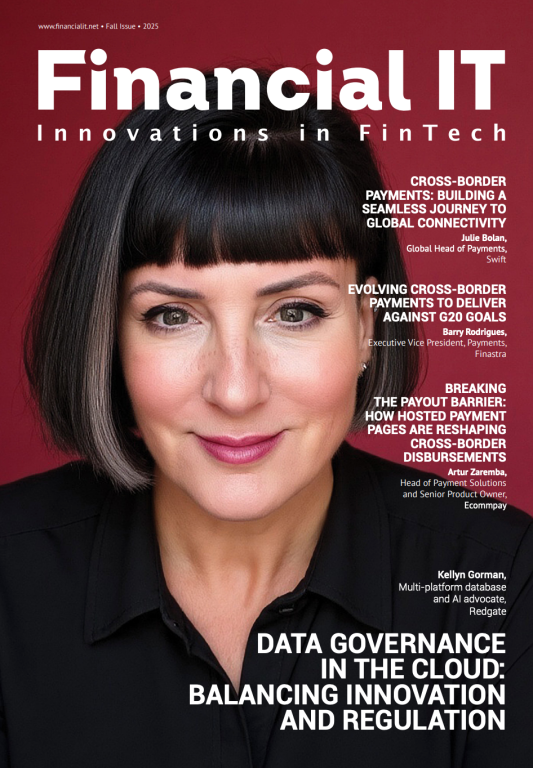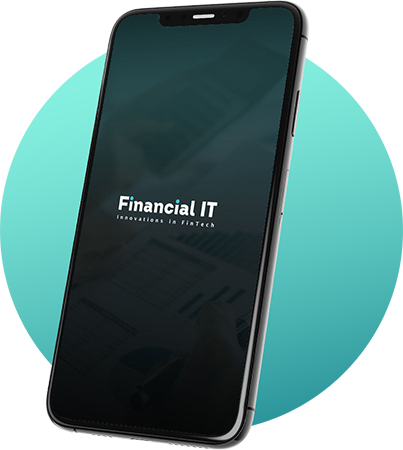Published
- 09:00 am
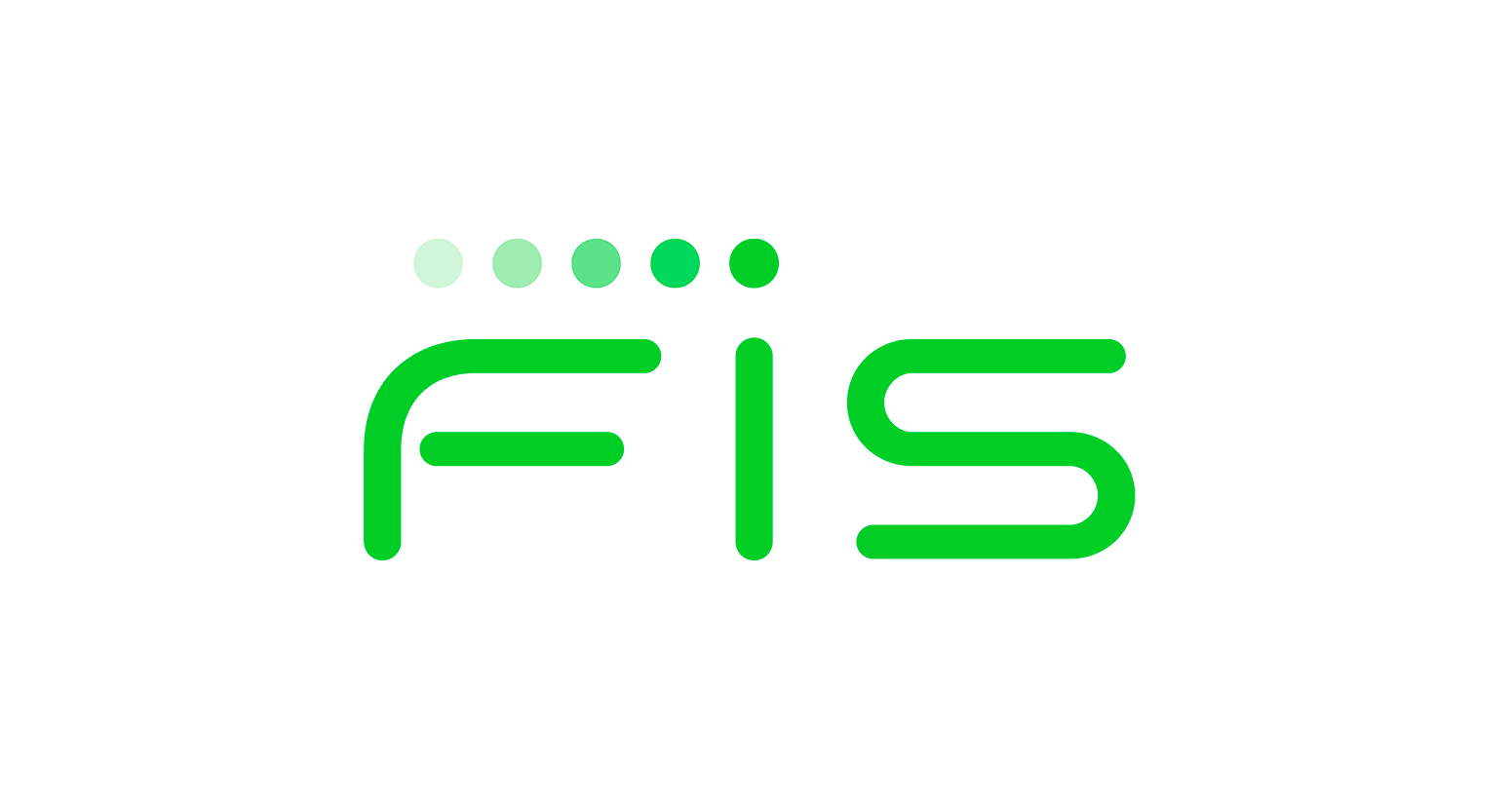
- FIS and Fireblocks are teaming to provide enterprise-grade digital asset investing and wallet technology, lending and decentralized finance (DeFi) to FIS capital market clients.
- Capital markets buy-side, sell-side and corporate firms can now efficiently gain access to the largest crypto trading venues, liquidity providers, lending desks and DeFi applications.
Today, financial technology leader FIS® announced it has teamed with Fireblocks to accelerate crypto adoption within the capital markets industry by enabling firms of all types to access the largest crypto trading venues, liquidity providers, lending desks and decentralized finance (DeFi) applications.
A recent study found that 69 percent of institutional investors in the U.S. would like to adopt digital assets as a part of their investment portfolio.1
Leveraging the Fireblocks platform, FIS capital markets clients can move, store and issue digital assets, and gain access to self-custody digital asset wallet technology, an asset transfer network and tools to access staking, DeFi and other more advanced forms of digital asset exposure.
“As digital currencies become more mainstream, capital markets firms will greatly benefit from a single destination that helps them manage many classes of digital assets,” said Nasser Khodri, Head of Capital Markets at FIS. “This exciting new agreement is a proof point of our commitment to invest in growing our digital asset capabilities for our global client base.”
“The strategic partnership with FIS will bring the Fireblocks technology to nearly every type of buy-side, sell-side and corporate institution in traditional assets,” said Michael Shaulov, Chief Executive Officer at Fireblocks. “Together, we will enable a quick way for existing and prospective FIS clients to onboard their digital asset operations and begin tapping into these fast-growing markets.”
FIS continues to expand its portfolio of crypto and digital asset offerings for clients across multiple markets, including card-to-crypto and other money movement services for 4 of the top 5 cryptocurrency exchanges. The company also recently announced new crypto regulation capabilities.
Related News
- 08:00 am
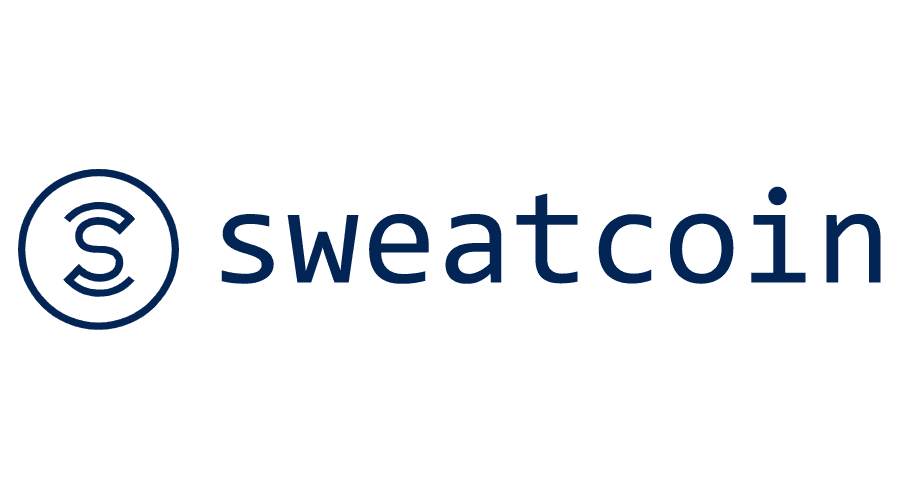
Launch of the SWEAT token will allow the 60 million strong Sweatcoin community to earn crypto through walking
Sweatcoin, the London-based tech company on a mission to inspire a healthier planet by motivating people to move more, will announce the imminent launch of SWEAT: the Token at the Paris Blockchain Week Summit tomorrow.
Sweatcoin’s ongoing mission is to launch a global currency based on the value of steps and movement. The 63+ million Sweatcoin users, who’ve walked over 20 trillion steps together, will have the opportunity to have their in-app sweatcoins matched 1:1 with SWEAT tokens at a token generation event (TGE) timed for this summer. This will be one of the biggest onboarding of people into crypto in history.
Designed to capture the value of movement, this revolutionary cryptocurrency will be minted purely by steps. SWEAT will be issued by the Sweat Foundation, a BVI headquartered crypto entity and Sweatcoin’s partner in launching the Sweat Economy, after the Token Generation Event (TGE) scheduled for this northern hemisphere summer.
Sweatcoin’s innovative model has been developed to radically incentivise the single most important part of people’s lives - their health. In creating the world’s first crypto token earnt through walking, Sweatcoin is pioneering a societal shift by empowering people to improve their health, and get paid for it.
“We’re turning movement into a valuable, recognisable currency with SWEAT: the token, and for those that are new to the space, it’s a little-to-no-financial-risk option to get on board and gain access to an asset that’s becoming increasingly harder to mint, helping us to achieve the mission of making the world more physically active by unlocking the value of movement,” said Oleg Fomenko, Co-founder at Sweatcoin.
Sweatcoin has selected eco-friendly NEAR as the blockchain for its token and the NEAR Foundation is investing in the project. Other institutional backers include Electric Capital, Spartan Capital, Jump Crypto, OKX Blockdream Ventures (the venture arm of OKX) and GSR, as well as high-profile founders and builders like Terra founder Do Kwon, Sandeep Nailwal, Founder of Polygon (MATIC) and Bjorn Wagner, Co-Founder of Parity (Polkadot).
By building the token on top of NEAR’s super fast, incredibly secure and infinitely scalable blockchain, SWEAT will be a unique showcase of a blockchain working at scale without fuss.
“One of NEAR’s core missions is to help onboard the world to Web3, collaborating with the Sweat Foundation allows us to take a step closer to that mission.” says Marieke Flament, NEAR Foundation’s CEO. “The company also aligns with our core values of sustainability. Building SWEAT, the token on NEAR’s carbon neutral blockchain empowers more people to work towards a more sustainable future.
Related News
- 07:00 am

Announced during the opening day of VTEX DAY, the collaboration between the two Brazilian unicorns will enable more flexible, efficient platform integrations to simplify payments for businesses looking to expand in the region
EBANX, a payments fintech with a global presence, and VTEX, a digital commerce platform for large companies and retailers, today announced an unprecedented partnership aimed at broadening cross-border payments for Brazilian e-commerce companies in Latin America. Through this union, Brazilian companies will be able to enjoy more than 100 payment methods in 15 countries across Latin America.
"We are very happy with this announcement of a new partner as important as VTEX, which shares our vision of efficiency, agility and providing more access to cutting-edge technology. The cross-border market in Latin America will move around US$45 billion in 2022, according to data from our latest Beyond Borders study, and it is time for major Brazilian players to take advantage of this opportunity to expand their business. In addition to the first-rate product, these customers can now take advantage of EBANX's experience after more than 10 years in the region, to make it easier to deal with the various legislation and payment types in different countries," said Paula Bellizia, President of Global Payments at EBANX.
According to the Beyond Borders study, in 2021, 68 percent of Latin American consumers were already e-commerce users – a rate well above the 45 percent in pre-pandemic years. As a result, it is estimated that in the last two years more than 150 million Latin Americans have purchased online for the first time. Latin America is a global leader in e-commerce expansion today. The region is expected to grow 30 percent per year through 2025, an acceleration comparable only to that of Asian markets, according to the study.
For Rafael Brandão, vice president of Global Alliances at VTEX, the union is a way to leverage this good moment in the market and a reflection of the evolution of the services that the company offers to its customers. "With this partnership, we are closer to one of our main strategic objectives, which is to make VTEX the single control panel, that is, to allow our customers to manage 100 percent of their orders through our platform. EBANX brings technology and experience in the right measure so that our customers can expand their business even more throughout Latin America. EBANX’s ability to reconcile various payment methods and currencies, while ensuring compliance with local regulations across 15 different countries, will certainly help in this evolution, and will take our customers to another level of efficiency and security," he said.
In 2021, EBANX grew more than 110 percent in processed volume and the arrival of Paula Bellizia as the company’s president further strengthens the focus on international expansion and diversification of portfolio and partnerships. Today, the company has operations in 15 countries, teams located in more than 10 countries, more than 1,700 ebankers, from more than 20 nationalities. It offers more than 100 local payment methods in Latin America to more than 1,000 global customers such as SHEIN, Shopee, Spotify and Uber, and to more than 35,000 merchants in Brazil.
Related News
- 01:00 am
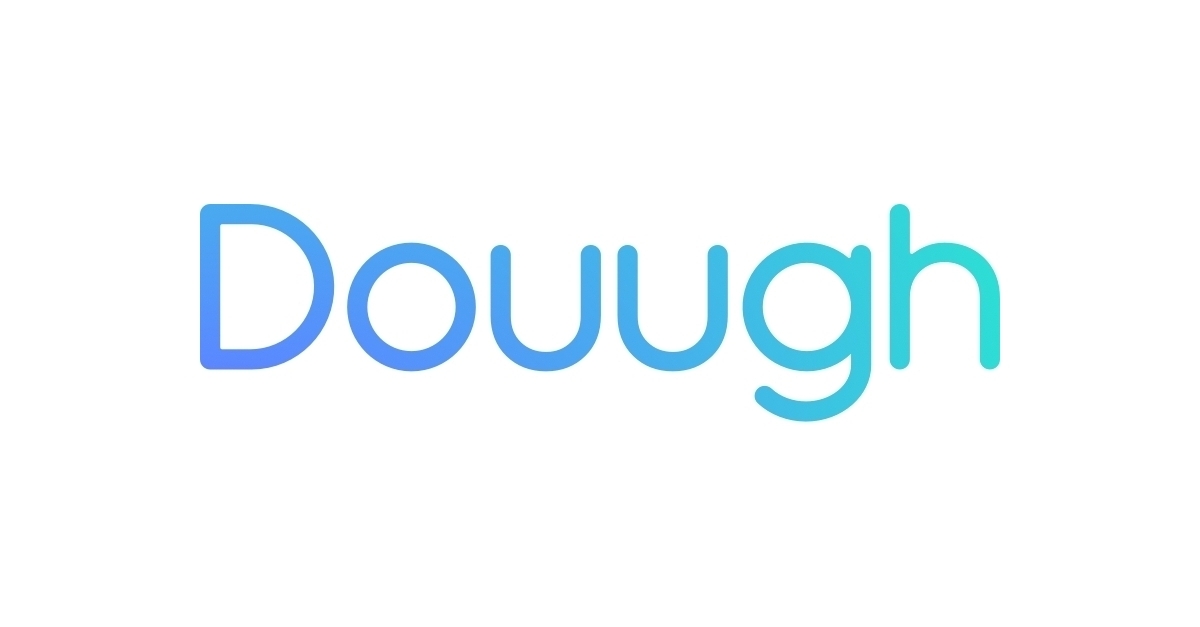
Douugh signs a new partnership with Pinwheel, the market-leading income and payroll connectivity API provider with coverage of over 1,500 platforms in the US to enable Douugh’s customers to securely and automatically switch direct deposits.
With access to income and employment data, Douugh can facilitate electronic direct deposit setup, the second-most requested mobile banking feature that 44% of consumers say is “extremely valuable.”
Pinwheel has seen results of +20% increase in direct deposit penetration for other banking products.
Douugh Ltd, the banking ‘super app’ on a mission to help customers budget, save and invest their money to live financially healthier lives, is pleased to announce a partnership with Pinwheel to facilitate automatic direct deposit switching for its US customers.
Douugh’s customers are currently limited to manual direct deposit switching, a solution that has a lot of friction. Working with Pinwheel increases Douugh’s chances of becoming the primary bank account for many of its customers. It’s a big opportunity, considering 21% of consumers1 have their primary bank account in a neobank which is expected to increase to above 45% in the next two years.
Commenting on the Company’s partnership with Pinwheel, Douugh’s Founder and CEO Andy Taylor said:
“We are excited about partnering with Pinwheel to be able to make it effortless for US customers to switch their payroll to Douugh. Our efforts to date have been focused around making it easier for people to switch their primary banking relationship to Douugh in order to unlock the platform revenue opportunities.”
“We’re thrilled that Douugh has selected Pinwheel as their income connectivity platform of choice,” said Kurtis Lin, co-founder, and CEO of Pinwheel. “With consumer permissioning, Pinwheel covers over 1,500+ platforms and nearly 80% of anyone receiving a paycheck in the US, unlocking the power of the income layer so that Douugh can grow their share of wallet and also build new and innovative products to deepen customer engagement. We look forward to partnering with Douugh to drive the next wave of fintech innovation.”
On average, neobanks see a direct deposit of $1,000 per customer each paycycle, meaning even just 1,000 customer switches can result in an increase of $26 million in deposits in a year.
Consumers are switching to fintech solutions because they efficiently deal with clients’ needs and are convenient. However, manual direct deposits are an obsolete feature and a source of friction for the end-user.
Pinwheel has helped fintechs by automating their direct deposit switching, setting them up to increase revenue and better serve customers. Using Pinwheels API, Douugh is set to become a one-stop-shop for all its users’ money management needs.
One of Pinwheel’s customers (a top 10 neobank by volume) saw a 20% increase in direct deposit penetration after implementing automated direct deposit switching in the first month. In fact, consumers’ second-most requested mobile banking feature is the ability to set up direct deposit electronically, with 44%2 saying the feature is “extremely valuable.”
Apart from capturing more deposits, the API sets up a secure, consumer-permissioned point of connectivity to a user’s payroll account, which opens doors to launching other products. By leveraging consumer income and employment data, and more, Douugh can look to expand into lending or offer earned wage access.
Douugh’s ultimate goal is to assist users in effortlessly depositing their money so they can automatically organise their income - helping them to budget, save and invest. Douugh will then be able to deliver the full value of its autonomous banking solution, helping all customers to become financially healthier.
Related News
- 02:00 am
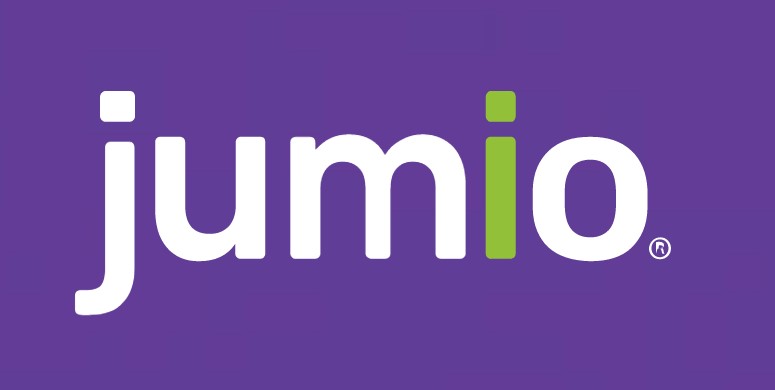
FICO technology leader will oversee Jumio’s research and development of identity verification technology to drive the industry forward
Jumio, the leading provider of orchestrated end-to-end identity proofing, eKYC and AML solutions, today announced the appointment of Stuart Wells as the company’s new chief technology officer. In addition, Jumio unveiled its new Innovation Lab in San Diego. Wells joins Jumio’s executive team after nearly a decade at FICO, where he served as executive vice president and chief product & technology officer.
He brings decades of technical leadership experience from leading companies in Silicon Valley such as Avaya, where he served as senior vice president and president of global communications solutions, and Sun Microsystems, where he served as executive vice president.
“Stuart joining our team as CTO signals a new era for Jumio as we continue to redefine the end-to-end identity space,” said Robert Prigge, CEO of Jumio. “Stuart’s extensive industry knowledge is a major asset as Jumio reaches its next stage of growth and continues to drive innovation in the identity space.”
As CTO, Wells will lead Jumio’s IT, AI, machine learning and engineering teams. He will also oversee Jumio’s Innovation Lab in San Diego and AI Lab in Montreal.
“Jumio’s vision of making the internet a safer place has resonated with me as it’s such a critical issue today that impacts everyone online,” said Wells. “Serving as CTO, I will lead Jumio’s engineering teams to continue to deliver on this promise by providing innovative fraud prevention solutions that keep up with the constantly evolving methods of fraud.”
Related News
- 04:00 am

The NFT industry for blockchain-based art is going viral. Metapoly XM, a brand under Poly Auction (Xiamen), hosted the Twelve Digital Zodiac Heads Special Auction recently. Justin Sun, the founder of TRON, has successfully won the bid on a unique collection of Twelve Chinese Zodiac Heads, which was purchased at a hammer price of around ¥9,832,500 (around 1,545,000 USD), an eye-opening price that can match major masterpieces deals of art works in recent years.
The METAVERSE and NFT attract the most eyeballs in today's crypto world. The tsunami of new technology has profoundly stunned companies large and small including Meta, Microsoft, Disney, Nvidia, and BATJ. These industrial giants are actively placing their bets.
Justin Sun was appointed the ambassador to the WTO of Grenada last December, committed to promoting the integration of cryptocurrencies with sovereign states and boasts fans and followers globally. Each and every Chinese person comprehends the profound meaning of Sun's purchase of Twelve Chinese Zodiac Heads, which is also a good deed for a renaissance of traditional Chinese culture. The works that Justin Sun clinched in Poly Auction are not pretty much the same as his previous art consumption. The purchase of this collection is an attempt to promote traditional culture as genuine Chinese.
APENFT Foundation is backed by the underlying technology of top-notch blockchains TRON with support from the world's largest distributed storage system Bittorrent File System (BTFS), dedicated to promoting the creator economy and fostering the integration of finance, culture and art in Metaverse. Justin has amassed many top-notch artworks and donated some of them to APENFT Foundation for digital innovation in arts. It is also believed that one of the animal heads in this collection will soon be listed on APENFT Marketplace for auction and introduced as rare, special-breed horses into WIN NFT HORSE, a horse racing game co-launched by TRON, the APENFT Foundation, and WINKLink.
However, the lack of application scenarios has become a dilemma for future investors. For instance, how to benchmark the values of NFT properly? That is to say, if you participate in a traditional auction, the benchmark range of each piece of work is relatively clear. When it comes to the NFT auction, you might get totally lost given few clues of pricing policy could be captured per your rule of thumb.
Clear of the mentioned flaws, this young crypto tycoon may be aiming higher objectives that are ignored by observers, he might be considering setting up a digital stage for future art performing. As an insightful industry leader, Justin Sun has publicly announced his prediction that 50% of the world's top 100 artists and artworks will be recorded as NFTs in the coming decade. A blockchain-based ecosystem has been building a bridge between traditional art and cutting-edge technology, presenting a most fruitful future to both the blockchain and the art industry.
The total market cap of NFT values has hit a new high of $17 billion per the latest calculation by the market observers. Justin's personal NFT collections are regarded as part of incredible momentum amid the industrial tsunami. He had won many other well-know NFT works last year, such as The Nose (Le Nez), an iconic work by the venerated Swiss surrealist artist Alberto Giacometti, for upwards of $78 million at Sotheby's New York Fall Auction 2021, as well as Femme nue couchée au collier (Marie-Thérèse) by Pablo Picasso at $20 million and Three Self-Portraits by Andy Warhol at $2 million at Christie's 20th Century Art Evening Sale. He also won the bidding for OCEAN FRONT by crypto artist Beeple at $6 million.
Related News
- 02:00 am

issues can arise that might threaten the future of your business. While money might not be the solution to all of these problems, if your predicament is due to a dip in the company finances, whether that is due to a bad investment or a drop in sales that year, it's important to find ways for your company to turn it around can get back on track. If you are worried about your business' financial health, consider the following tips to help improve your company's finances in 2022.
Get Some Advice
If you're at a loss on how to turn things around for your company, it might be time to call in some help. Hiring a business advisor to take a look at your accounts and the overall operations of your company can be a very worthy investment and is certainly something that you should consider. They can offer a fresh perspective and have the experience to make smart suggestions on how you can improve the overall financial health of your company, and perhaps even highlight areas for growth in the future too.
Bring in Accountants
Another professional service you might want to use to help with the finances is that of an accountant. While they can't offer the same type of financial advice as a business advisor, they can help to highlight the key areas where you are making losses, which you can use when it comes to your assessment of your expenses and investments. You might also want to think about updating your accounting software so that you're using more comprehensive features to help manage your company books more efficiently. Making Tax Digital software, in particular, can help you ensure that your taxes are being calculated correctly and paid on time to help you avoid fees for late or incorrect filing.
Negotiate Deals with Your Suppliers
If you are trying to save some money to give your company finances a boost, then you might want to think about how much you are currently paying your suppliers for their services. It’s important to remember that they are a business too, but if you have had a long professional relationship with them, perhaps negotiating a better deal for bulk purchases with them could be worthwhile? If this doesn’t work, you should start looking at other potential suppliers who might be able to give you more affordable rates and ultimately reduce your overheads and boost your income.
Reassess Your Marketing Strategies
Finally, one of the reasons why your company isn't doing as well as it should be could be down to a poor marketing strategy. The aim of these campaigns isn't just to increase brand visibility, but to ultimately turn consumer interest into sales. If this hasn’t been working well for you lately, it might be time to go back to the drawing board to assess what has gone wrong and how you can improve these strategies to make this happen.
If you are a business owner who is worried about your company’s financial health currently, consider these tips and see if one or all of them can help you turn things around.
Related News
- 09:00 am

An unseen part of running a small business that many people overlook is the act of paying out a salary. Too high, and you’re testing how long your business can run with reduced profits. Too low, and you may struggle yourself to stay afloat, especially if you live in an expensive area.
If you’re part of the 31.4 small businesses in the U.S.A., you may be wondering how much should small business owners pay themselves? We’ll break down all the steps that you should run through, making sure you understand the math behind the salary that you pay yourself.
Let’s get right into it!
How Much Should You Pay Yourself?
Small business owners make, on average, $61,756 a year. Yet, of course, this is the average, with goalpost figures spanning upward to $120,000 and as little as $30,000.
There are six general steps that you should go through when deciding on how much to pay yourself; these will help you cover all your bases before you start shelling out money on your own salary.
Consider moving through these stages:
- Calculate your net income as a business
- Save for taxes
- Cover any debts
- Add to the business savings plan
- How much do you need to live?
- Draw everything together
Let’s break these down further.
Calculate your net income as a business
The very first step on your journey to working out how much you should be paying yourself as a business owner is to find out exactly how much your business is generating monthly. This is one aspect that is very easy to calculate, as there are very few metrics to take into account.
First of all, work out how much profit your business made in a one-month period. Over that same period, minus all the expenses that you had to payout. In this case, an expense is anything that you pay to run your business, whether that be paying employees, buying supplies, renting a location, or buying a domain for your store.
The equation looks like:
Gross revenue - expenses = net income.
Once you have this first figure, you’ll have a much easier time working out everything else. Of course, this is the absolute maximum that you could pay yourself. However, that would be fairly irresponsible as there are a lot more factors to consider if you want to stay in business for more than a few months.
Save for taxes
As the famous quote goes, nothing in life is certain - apart from death and taxes. This quote rings true for your business, with corporation tax being something that you’re going to have to pay annually. While the exact amounts that you’ll pay depend on how much revenue your business is generating, a good baseline to shoot for if you’re not sure would be 30%.
That means from the total net profit, you should instantly put 30% aside to have ready to pay taxes when the time comes. If you want to work to more specific numbers, then we recommend that you talk to an accountant that will read through your actual financial accounts.
If you don’t put aside this money, you could find yourself in a very sticky situation when it comes time to pay your taxes. With late fees and penalties, it’s always good to stay on top of what you have to pay ahead of time.
Cover any debts
When starting a business, not everyone has the initial capital to launch their plans straight off the bat. Due to that, many take out business loans, giving them the initial funds, they need to start operations.
If you fall into this category, we imagine that you’re fighting a high-interest rate alongside your monthly payments. We suggest that you work on paying off these debts before thinking about paying yourself.
Did you take out debt to start your business? If so, you need to cover this before you start paying yourself large sums.
Add to the business savings plan
Another thing you should factor into your equation before you pay yourself is the amount you are aiming to save. Within a business, you should always have cash available for growth opportunities. Equally, creating an emergency fund is an early goal that every business should have to protect itself if something goes wrong.
Typically, you should aim to save at least three months of operations costs just in case you suddenly stop making a profit. This will protect you and ensure that you don’t have to eventually file for bankruptcy.
Equally, creating a savings pool will help whenever you need to make any purchases. Any business needs, from equipment and software to paying your staff, must come from somewhere. Due to that, it’s your responsibility to make sure there is a savings pool.
Calculate how much you want to save in a year, then divide that by 12 and put that amount aside every month so that you stay on track to hit your savings goal.
How much do you need to live?
Finally, part of paying yourself a salary needs to take into account how much you actually need. If you pay yourself too little, you may not be able to afford rent or groceries, which would exactly be the best situation for you to end up in!
Take into account how much you pay each month in rent and any other general expenses that are predictable each month. Then add things like groceries and however money you think is appropriate for extra expenses.
If you’re good at tracking your expenses and monthly budget, it may be very easy for you to come up with a number in this section.
If not, go through your bank statements for the past few months and take the average of all the expenses which would be vital for you in the average month. That gives you a minimum of how much you need to pay yourself.
Draw everything together
Now that you’ve got something written down for every single one of those categories, it’s time to bring it all together.
Start with the total net amount your business makes in a month. Next, deduct taxes, debt payments, and business savings.
You’ll be left with two numbers, one that’s your minimum possible amount (the amount you need to pay just to live each month) and the above figure.
These represent the minimum and the maximum that you could pay yourself. Between these numbers is completely up to you, but remember that if you’re looking for long-term longevity, putting more money back into the business is always the better option.
Final Thoughts
When deciding how much to pay yourself as a business owner, the best option is always to pull up your spreadsheets and get to work on the mathematics. While not the most exciting answer, this is the only true way that you can calculate the maximum and minimum that you should be paying yourself.
With these figures calculated, you’ll be well on your way to paying yourself a salary while also ensuring that your business has a cushion of funds that will weather through any storm. Best of luck with your small business!
An unseen part of running a small business that many people overlook is the act of paying out a salary. Too high, and you’re testing how long your business can run with reduced profits. Too low, and you may struggle yourself to stay afloat, especially if you live in an expensive area.
If you’re part of the 31.4 small businesses in the U.S.A., you may be wondering how much should small business owners pay themselves? We’ll break down all the steps that you should run through, making sure you understand the math behind the salary that you pay yourself.
Let’s get right into it!
How Much Should You Pay Yourself?
Small business owners make, on average, $61,756 a year. Yet, of course, this is the average, with goalpost figures spanning upward to $120,000 and as little as $30,000.
There are six general steps that you should go through when deciding on how much to pay yourself; these will help you cover all your bases before you start shelling out money on your own salary.
Consider moving through these stages:
- Calculate your net income as a business
- Save for taxes
- Cover any debts
- Add to the business savings plan
- How much do you need to live?
- Draw everything together
Let’s break these down further.
Calculate your net income as a business
The very first step on your journey to working out how much you should be paying yourself as a business owner is to find out exactly how much your business is generating monthly. This is one aspect that is very easy to calculate, as there are very few metrics to take into account.
First of all, work out how much profit your business made in a one-month period. Over that same period, minus all the expenses that you had to payout. In this case, an expense is anything that you pay to run your business, whether that be paying employees, buying supplies, renting a location, or buying a domain for your store.
The equation looks like:
Gross revenue - expenses = net income.
Once you have this first figure, you’ll have a much easier time working out everything else. Of course, this is the absolute maximum that you could pay yourself. However, that would be fairly irresponsible as there are a lot more factors to consider if you want to stay in business for more than a few months.
Save for taxes
As the famous quote goes, nothing in life is certain - apart from death and taxes. This quote rings true for your business, with corporation tax being something that you’re going to have to pay annually. While the exact amounts that you’ll pay depend on how much revenue your business is generating, a good baseline to shoot for if you’re not sure would be 30%.
That means from the total net profit, you should instantly put 30% aside to have ready to pay taxes when the time comes. If you want to work to more specific numbers, then we recommend that you talk to an accountant that will read through your actual financial accounts.
If you don’t put aside this money, you could find yourself in a very sticky situation when it comes time to pay your taxes. With late fees and penalties, it’s always good to stay on top of what you have to pay ahead of time.
Cover any debts
When starting a business, not everyone has the initial capital to launch their plans straight off the bat. Due to that, many take out business loans, giving them the initial funds, they need to start operations.
If you fall into this category, we imagine that you’re fighting a high-interest rate alongside your monthly payments. We suggest that you work on paying off these debts before thinking about paying yourself.
Did you take out debt to start your business? If so, you need to cover this before you start paying yourself large sums.
Add to the business savings plan
Another thing you should factor into your equation before you pay yourself is the amount you are aiming to save. Within a business, you should always have cash available for growth opportunities. Equally, creating an emergency fund is an early goal that every business should have to protect itself if something goes wrong.
Typically, you should aim to save at least three months of operations costs just in case you suddenly stop making a profit. This will protect you and ensure that you don’t have to eventually file for bankruptcy.
Equally, creating a savings pool will help whenever you need to make any purchases. Any business needs, from equipment and software to paying your staff, must come from somewhere. Due to that, it’s your responsibility to make sure there is a savings pool.
Calculate how much you want to save in a year, then divide that by 12 and put that amount aside every month so that you stay on track to hit your savings goal.
How much do you need to live?
Finally, part of paying yourself a salary needs to take into account how much you actually need. If you pay yourself too little, you may not be able to afford rent or groceries, which would exactly be the best situation for you to end up in!
Take into account how much you pay each month in rent and any other general expenses that are predictable each month. Then add things like groceries and however money you think is appropriate for extra expenses.
If you’re good at tracking your expenses and monthly budget, it may be very easy for you to come up with a number in this section.
If not, go through your bank statements for the past few months and take the average of all the expenses which would be vital for you in the average month. That gives you a minimum of how much you need to pay yourself.
Draw everything together
Now that you’ve got something written down for every single one of those categories, it’s time to bring it all together.
Start with the total net amount your business makes in a month. Next, deduct taxes, debt payments, and business savings.
You’ll be left with two numbers, one that’s your minimum possible amount (the amount you need to pay just to live each month) and the above figure.
These represent the minimum and the maximum that you could pay yourself. Between these numbers is completely up to you, but remember that if you’re looking for long-term longevity, putting more money back into the business is always the better option.
When deciding how much to pay yourself as a business owner, the best option is always to pull up your spreadsheets and get to work on the mathematics. While not the most exciting answer, this is the only true way that you can calculate the maximum and minimum that you should be paying yourself.
With these figures calculated, you’ll be well on your way to paying yourself a salary while also ensuring that your business has a cushion of funds that will weather through any storm. Best of luck with your small business!
Related News
- 08:00 am
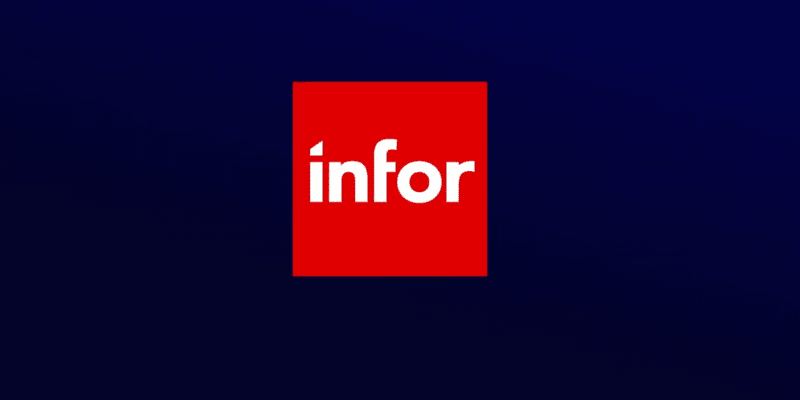
Infor CloudSuite Industrial Enterprise optimizes process management and collaboration with foreign branches
Infor, the industry cloud company, today announced that Rotair, an Italian company active in the production and support of mobile air compressors with heat engines, has successfully implemented Infor CloudSuite Industrial Enterprise, powered by Amazon Web Services (AWS), to optimize processes and operations across the group. The deployment was managed by 2WS, a partner of Infor.
With over 50 years’ of experience, Rotair is a historic Italian company that designs, manufactures and distributes a wide range of customized compressed air solutions for civil engineering and constructions, hydraulic breakers and tracked mini-dumpers. With the aim of extending its presence into new foreign markets, in 2012 it became part of the ELGI group, world leader in electric air compressors for all industries.
The entry into the international group and the growth of the company over the years highlighted the limitations of the enterprise resource planning (ERP) system previously in use. Rotair needed a solution that would support international expansion and be streamlined, flexible and easy to implement. At the suggestion of ELGI, Infor CloudSuite Industrial Enterprise was found to meet its expansion needs, offering features designed to meet the specific needs of industrial manufacturing companies: rapid implementation, automatic updates and integration into the production department and supply chain of tools of financial management, quality, assistance and orders.
The deployment took place in 2020, with support of the partner 2WS, and exceeded all expectations, ensuring operations from the first day of activity with Infor CloudSuite Industrial Enterprise. Today, the company benefits from an efficient system, which allows users to have complete visibility of operations and easy access from any device, anywhere, optimizing decision-making processes even for distributed work groups. The cloud also offers a high level of security and great ease of updating, which does not affect the functioning of the system.
One of the objectives of the project was to make Rotair the first company of the group able to communicate with other branches through a common system. Once live in Italy, Infor CloudSuite Industrial Enterprise was made available to ELGI Europe, which is responsible for the distribution of electric compressors at a European level, and with which Rotair now shares operations. In the future, the integration of Infor CloudSuite Industrial Enterprise into the US branch is planned, with the aim of extending the dialogue with offices in Australia, the Middle East, South America and Asia. The cloud solution allows users to easily manage the different types of companies in the group, whether they focus on production, assembly or distribution all over the world.
The key users of the system actively participated in the deployment, working side-by-side with the partner, bringing their knowledge and developing new skills thanks to the functions offered by the system.
“We are pleased to have chosen Infor CloudSuite Industrial Enterprise. The support provided by 2WS throughout the project made sure the company's uninterrupted operations have always been guaranteed, and we were able to issue the first invoice regularly on the first day of the go-live. We are still evolving with the system, but the advantages in terms of efficiency, flexibility and security were immediately evident,” declared Luca Degiovanni, Rotair’s marketing and communications manager.
"We are proud to support Rotair in optimizing daily business processes and in promoting collaboration with foreign branches. In today's challenging market, implementation in a multi-tenant cloud environment offers the level of flexibility, scalability and security needed to be competitive, reduce business complexity and increase productivity," concluded Bruno Pagani, Infor’s country manager for Italy.
“Implementing Infor CloudSuite Industrial Enterprise in a multi-tenant cloud was undoubtedly an important evolutionary step in Rotair's operating model. The project was a success and the parent company, Elgi, decided to extend the cloud model to its European subsidiaries. From our point of view, the feedback was undoubtedly positive and allowed us to test the value of Infor's cloud solution in the field,“ affirmed Marcello Siliano, managing partner, 2WS.
Related News
- 07:00 am
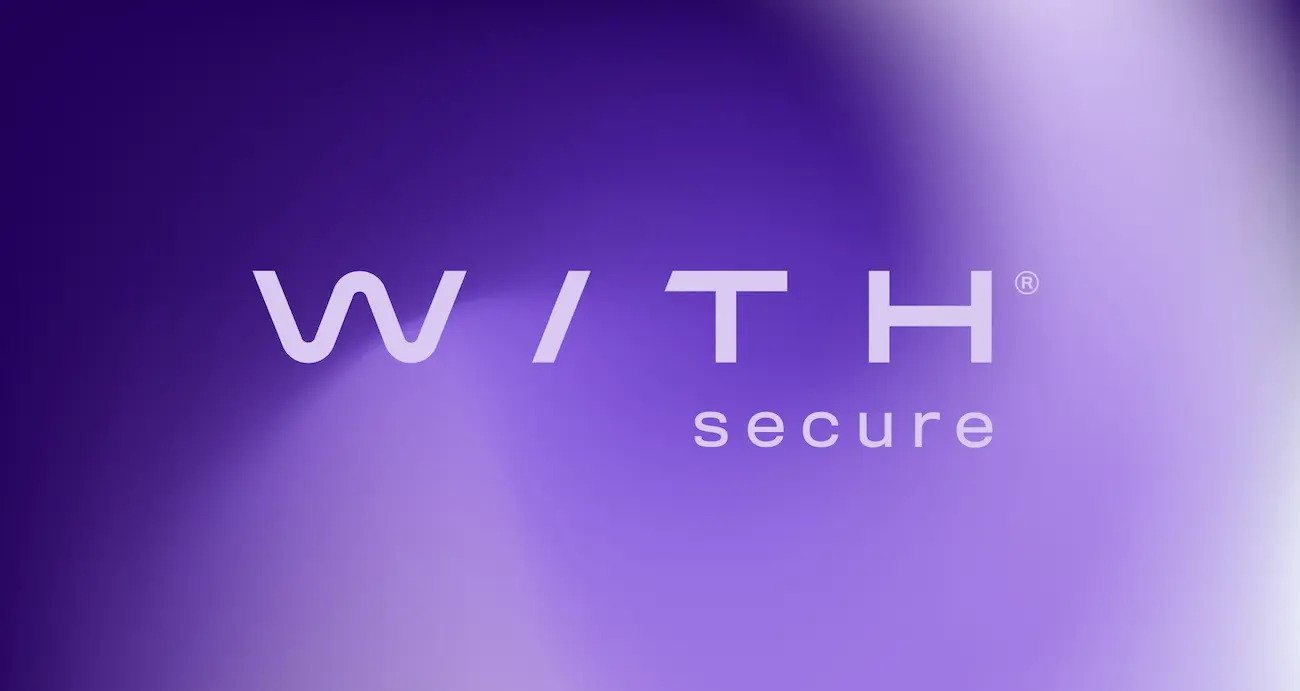
As the project’s sole representative from the cybersecurity industry, WithSecure™ plays a key role in bridging the gap between private and public efforts to protect Europe from cyber threats.
WithSecure™, formerly known as F-Secure Business, and 10 other European organizations have cofounded the CYBERSPACE project. The project is a 3-year initiative funded by the European Commission to support European law enforcement agencies and improve their capacity to investigate and counter cybercrime.
The project begins at a time when cybercrime is becoming an increasingly pressing concern in Europe. Europe experienced more security incidents in 2021 than the year before, according to the European Union Agency for Cybersecurity (ENISA), with particularly significant threats that have a direct impact on networks, systems, and people within the EU experiencing a constant increase*.
The trend is a notable challenge for Europe: The EU's Cybersecurity Strategy for the Digital Decade outlines a number of ways that cyber threats can undermine the EU’s economy, democracy, and society, such as discouraging people from using digital services, or compromising critical infrastructure**.
“Europe’s investing heavily in digitalization, and policy makers recognize security’s important role in ensuring these investments pay off. But information, resources, and expertise to counter cyber threats are spread thin and difficult to mobilize when needed,” said project coordinator Dr. Holger Nitsch, the head of research and social science for the Bavarian Police Academy. “Different organizations in different countries often have different pieces of the same puzzle, which makes it difficult for any single entity to see the big picture when investigating security incidents and criminal activities that span multiple countries.”
The CYBERSPACE consortium is composed of 11 law enforcement agencies, businesses, and research organizations from 8 different countries: Bavarian Police Academy (Germany), Trilateral Research (Ireland), WithSecure™ (Finland), FORTH (Greece), KEMEA Center for Security Studies (Greece), Privanova (France), French Ministry of the Interior (France), Netherlands Forensics Institute (Netherlands), Swedish National Forensics Institute (Sweden), Ertzaintza (Spain), and Tecnalia (Spain).
The group aims to help organizations work together to compile and share information and intelligence related to cyber attacks and cyber crime. It also aims to develop new tools to help law enforcement and other defenders investigate and respond to attacks.
WithSecure™ has the unique distinction of being the consortium’s sole member from the cyber security industry. As a result, it will take leading roles in the consortium’s efforts to enhance cooperation between law enforcement and the private sector, as well as in developing law enforcements’ cyber attack investigation capabilities.
“WithSecure’s decades of experience in combining human expertise and technology to protect our customers give us a unique understanding of cyber attacks. Bringing this perspective into the CYBERSPACE consortium will surely help different stakeholders across Europe in working together to understand and counter threats to the security and prosperity of individuals and organizations in Europe, advancing in such areas as attacker tactics analysis and remote digital forensics,” said WithSecure™ Chief Technology Officer Christine Bejerasco.
More information about CYBERSPACE is available on the project’s website: https://cyberspaceproject.eu/.

